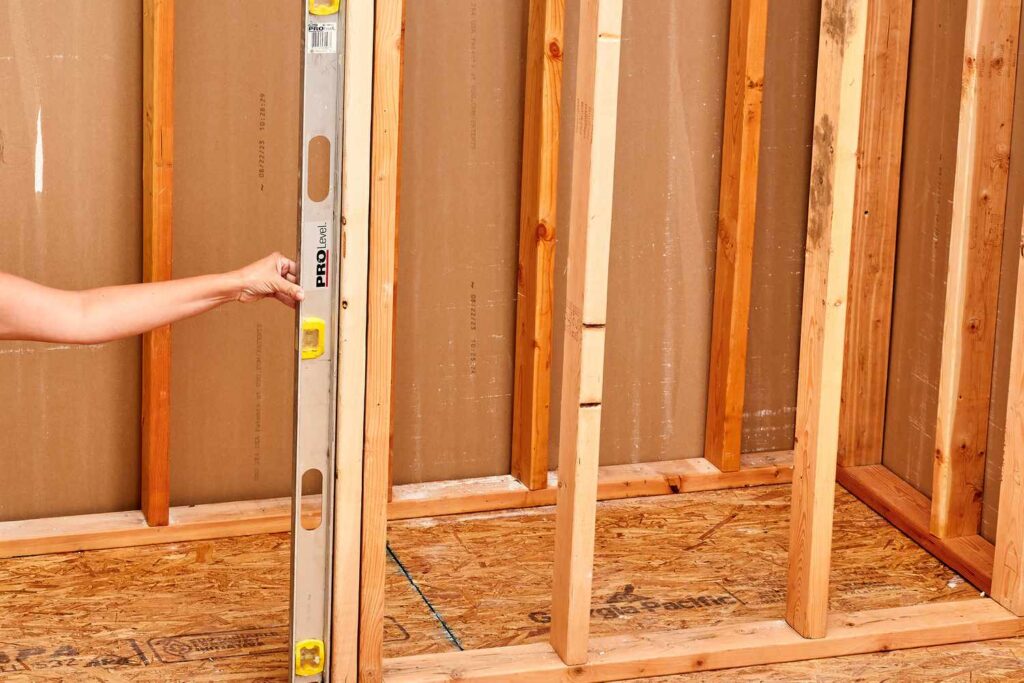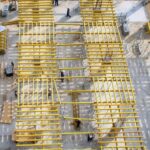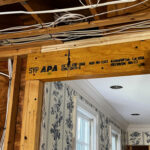Laminated Veneer Lumber (LVL) formwork timber has become a revolutionary material in Australian construction projects. This engineered wood product is made up of several layers of thin wood veneers, glued together under high pressure to create a strong and flexible building material.
The Australian construction industry has seen a significant shift towards using LVL formwork timber, driven by its outstanding performance qualities:
- Superior Strength: Designed to provide consistent structural performance
- Moisture Resistance: Improved stability in different weather conditions
- Cost-Effective: Lower labour costs and longer reuse potential
- Lightweight Design: Easier handling and installation on construction sites
The increasing use of LVL formwork timber can be attributed to its ability to meet the demanding needs of modern construction projects. Its precise engineering guarantees dimensional stability and dependable performance, making it an excellent choice for both residential and commercial developments. Australian builders and contractors especially appreciate LVL’s ability to endure the country’s various climate conditions while preserving structural integrity during concrete pouring and curing processes.

Understanding LVL Formwork Timber
LVL (Laminated Veneer Lumber) formwork timber represents a significant advancement in engineered wood technology. The manufacturing process involves peeling logs into thin veneers, typically 3mm thick, which are then dried and graded for quality. These veneers undergo precise layering, with each layer oriented in the same direction and bonded using high-performance structural adhesives under intense heat and pressure.
Australian construction professionals who embrace LVL formwork timber position themselves at the forefront of industry innovation. This advanced material not only delivers immediate benefits in terms of project efficiency but also contributes to long-term cost savings and improved build quality.
The structural composition of LVL creates remarkable benefits:
- Superior Strength: The parallel grain orientation maximises load-bearing capacity
- Dimensional Stability: Multiple layers resist warping and twisting
- Uniform Properties: Consistent performance across the entire length
- Defect Minimisation: The layering process disperses natural wood defects
Australian manufacturers must comply with AS/NZS 4357, the governing standard for structural LVL. This standard ensures:
- Strict quality control during production
- Regular testing of mechanical properties
- Compliance with safety requirements
- Proper grading and marking systems
Traditional solid timber, while useful in many applications, presents several limitations that LVL addresses:
| Traditional Timber LVL Formwork Variable strength | Predictable performance |
| Limited sizes | Custom dimensions available |
| Natural defects | Engineered consistency |
| Moisture sensitivity | Enhanced stability |
The engineered nature of LVL allows manufacturers to optimise the material properties specifically for formwork applications. The resulting product delivers precise dimensional tolerances and reliable structural performance essential for concrete forming operations.
Advantages of Using LVL Formwork in Construction Projects
LVL formwork timber delivers significant benefits that make it a superior choice for modern construction projects. The material’s exceptional strength-to-weight ratio stands out as a primary advantage, enabling:
- Easier manual handling on construction sites
- Reduced labour requirements during installation
- Lower transportation costs
- Decreased risk of worker injury
- Simplified logistics management
The inherent moisture stability of LVL formwork creates substantial advantages in Australian construction environments. Unlike traditional timber, LVL maintains its dimensional stability when exposed to moisture, resulting in: Read more about stability on https://press.princeton.edu/books/hardcover/9780691134444/stability-and-stabilization?srsltid=AfmBOoqQ-eSdUCbEt-Eos2rnyog0mrPCQ3h7DdrX_MWbfb5EImc0mDDh
- Minimal shrinkage or expansion
- Consistent concrete finish quality
- Reduced form failure risks
- Extended product lifespan
- Lower maintenance requirements
Warping resistance plays a crucial role in maintaining formwork integrity throughout construction phases. LVL’s engineered structure provides:
- Enhanced structural reliability
- Improved concrete surface finish
- Reduced material waste
- Decreased form replacement frequency
- Better dimensional accuracy

From a financial perspective, LVL formwork presents compelling cost-effective advantages compared to steel alternatives:
- Initial Investment
- Lower purchase costs
- Reduced transportation expenses
- Minimal specialised equipment requirements
- Operational Savings
- Faster installation times
- Decreased labour costs
- Lower maintenance expenses
- Long-term Benefits
- Multiple reuse capability
- Reduced storage space requirements
- Higher salvage value
In addition to the advantages of LVL formwork, incorporating durable materials such as Chain and Shade Mesh can further enhance the efficiency and effectiveness of construction projects. This mesh is fireproof, UV-treated, and hot-dipped galvanized for lasting protection, making it a valuable addition to any construction site.
The combination of these advantages positions LVL formwork as an ideal solution for construction projects requiring reliable, efficient, and economical forming systems. Australian builders report up to 25% cost savings when using LVL formwork compared to traditional steel alternatives, while maintaining superior quality standards in concrete construction.
Applications of LVL Formwork Timber in Building Structures
LVL formwork timber is incredibly versatile and can be used in a wide range of construction applications. It can be easily adapted to fit both vertical and horizontal structural elements with great accuracy and dependability.
Read about scaolfold netting on: Scaffold Netting vs Scaffold Shade Cloth: What’s Best for Your Project
Vertical Applications:
- Load-bearing walls: LVL formwork creates smooth, uniform surfaces for concrete walls, particularly effective in high-rise construction
- Column formations: The material’s dimensional stability ensures accurate column shapes and consistent concrete finish
- Lift shafts: LVL formwork excels in creating precise vertical alignments essential for lift shaft construction
Horizontal Applications:
- Beam structures: LVL formwork supports complex beam configurations, including curved and straight designs
- Slab construction: The material’s strength allows for larger spanning distances between supports
- Bridge decks: LVL formwork provides reliable support for concrete bridge deck construction
Specialised Applications:
- Underground parking structures
- Architectural feature walls
- Curved concrete elements
- Suspended ceiling systems
The adaptability of LVL formwork extends to specific structural requirements:
Load Distribution Capacity:
- Supports heavy concrete loads without deflection
- Maintains shape integrity during pouring
- Enables precise dimensional control
Design Flexibility:
- Custom sizing options for unique project specifications
- Ability to create complex geometric shapes
- Integration with other formwork systems
LVL formwork can be used in various types of construction projects, including both residential and commercial. It is suitable for basic structural elements as well as intricate architectural features. The precision and strength of the material make it especially valuable in projects that demand high-quality concrete finishes and exact measurements.
Installing LVL Formwork Timber: Best Practices for Optimal Performance
Proper installation of LVL formwork timber demands meticulous attention to detail and adherence to specific guidelines. These practices ensure structural integrity during concrete pouring and optimal performance throughout the construction process. To read more about integrity click here.
Essential Installation Guidelines:
- Maintain precise spacing between supports according to manufacturer specifications
- Check load capacity ratings before installation
- Ensure all connections are secure and properly aligned
- Install adequate bracing at recommended intervals
Pre-Installation Checklist:
- Inspect LVL components for damage or defects
- Verify moisture content is within acceptable ranges
- Clean all contact surfaces
- Check alignment tools and equipment calibration
Critical Safety Measures:
- Use appropriate personal protective equipment (PPE)
- Install safety barriers around work areas
- Follow load capacity guidelines strictly
- Implement proper fall protection systems
The installation process requires careful consideration of concrete pressure during pouring stages. LVL formwork must be adequately supported to prevent deflection or movement. Proper spacing of ties and braces helps distribute loads evenly across the system.
Key Installation Considerations:
- Apply release agents evenly to prevent concrete adhesion
- Install walers at specified intervals
- Secure all joints with appropriate fasteners
- Monitor formwork movement during concrete placement
Regular inspection during the pouring process helps identify potential issues early. Any movement or displacement should be addressed immediately to maintain structural integrity and achieve desired concrete finish quality.
Australian construction standards require specific documentation of installation procedures. Maintaining detailed records of load calculations, inspection results, and any modifications helps ensure compliance with regulatory requirements.
Maintaining and Reusing LVL Formwork Timber for Sustainable Construction Practices
Proper maintenance of LVL formwork timber creates significant cost savings and supports sustainable construction practices. The following maintenance protocols ensure optimal performance across multiple uses:
Essential Cleaning Practices
- Remove concrete residue immediately after stripping
- Use pressure washing with cold water
- Apply release agents before next use
- Sand down minor surface damage
- Inspect for delamination or deep scratches
Storage Requirements
- Store horizontally on level ground
- Use protective covers to shield from weather
- Maintain adequate ventilation
- Place supports at regular intervals
- Keep away from direct soil contact
Quality Assessment Between Uses
- Check moisture content levels
- Inspect edge conditions
- Examine surface flatness
- Verify structural integrity
- Document usage history
Maintenance Schedule
- Clean after each use
- Conduct monthly integrity checks
- Perform quarterly comprehensive inspections
- Replace release agents as needed
- Update maintenance records regularly
Proper care extends LVL formwork lifespan up to 20 reuses, compared to 5-10 uses for poorly maintained components. Australian construction sites implementing structured maintenance programs report 40% reduction in formwork replacement costs.
The combination of regular cleaning, appropriate storage, systematic inspections creates a sustainable cycle of formwork reuse that benefits both project budgets and environmental objectives.
Comparing Different Types of Formwork Materials: A Look at Steel vs Timber Options Including LVLs
The Australian construction industry utilises various formwork materials, each with distinct characteristics:
Steel Formwork
- High initial cost
- Extended lifespan
- Excellent for repetitive designs
- Heavy to transport
- Requires specialised handling equipment
LVL Formwork
- Cost-effective
- Lightweight
- Easy modification on-site
- Superior strength-to-weight ratio
- Adaptable to unique designs
Plywood Grades
Two primary grades dominate the Australian market:
F14 Plywood
- Standard structural grade
- Suitable for basic formwork
- Cost-effective option
- Moderate reuse potential
F17 Plywood
- Higher strength rating
- Enhanced durability
- Premium concrete finish
- Increased number of reuses
For detailed information on F14 and F17 grade plywood, which are essential in formwork applications, you can visit the Covert Procurement website.
The choice between these materials depends on project requirements, budget constraints, and specific application needs. Steel formwork suits large-scale projects with repeated elements, while LVL and plywood options offer flexibility and cost advantages for varied designs.
Supporting Elements Related to Effective Use Of LVL Forms In Construction Sites
The successful implementation of LVL formwork systems relies heavily on proper reinforcement bar (reo bar) placement. Correct reo bar installation ensures:
- Structural Integrity: Precise spacing between bars maintains concrete strength
- Load Distribution: Strategic placement helps distribute forces evenly
- Durability: Proper concrete coverage prevents corrosion
The interaction between LVL formwork and reo bars demands careful attention to:
- Maintaining specified concrete cover depths
- Securing bars against displacement during concrete pours
- Using appropriate spacers and chairs to support reinforcement, such as Reo-Bar Safety Protection Strips that help protect people from exposed reo bars during construction
Australian Standards AS 3600 provides detailed requirements for reo bar placement, emphasising the need for qualified supervision during installation phases. This attention to detail maximises the structural performance of LVL formwork systems in construction projects.
Environmental Impact And Sustainability Considerations When Choosing A Type For Your Next Project
The environmental benefits of LVL formwork timber come from its sustainable forestry sourcing practices. Australian manufacturers prioritise timber harvested from certified sustainable forests, ensuring:
- Responsible forest management
- Controlled harvesting cycles
- Protection of biodiversity
- Carbon storage capabilities
Efficient Manufacturing Process
The manufacturing process of LVL formwork generates minimal waste, as veneer layers are efficiently utilised. This means that almost every part of the wood being processed is used, reducing the amount of waste produced.
Durability and Reusability
The durability and reusability of LVL formwork reduce the need for frequent replacements, decreasing the environmental footprint of construction projects. Unlike traditional materials that may need to be replaced after a certain period, LVL formwork can withstand multiple uses, resulting in less waste being generated over time.
Carbon Benefits
LVL formwork also offers several carbon benefits compared to other alternatives such as steel:
- Lower embodied energy compared to steel alternatives: Embodied energy refers to the total energy required to extract, process, and transport a material. LVL formwork has lower embodied energy compared to steel, meaning it requires less energy input throughout its lifecycle.
- Carbon sequestration throughout the product lifecycle: Timber products like LVL have the ability to store carbon dioxide (CO2) during their growth phase. This stored carbon remains locked within the material even after it is processed into LVL formwork.
- Reduced transport emissions due to lighter weight: LVL formwork is lighter than steel alternatives, which results in lower transportation emissions when it comes to moving these materials from one place to another.
Environmentally Conscious Choice
The renewable nature of timber resources, combined with strict Australian forestry regulations, positions LVL formwork as an environmentally conscious choice for modern construction projects. By opting for LVL formwork made from sustainably sourced timber, builders can contribute towards reducing deforestation and promoting responsible forestry practices.
Conclusion
LVL formwork timber is a game-changing solution for modern construction projects. Its combination of strength, durability, and cost-effectiveness makes it an invaluable asset for builders looking to enhance project productivity.
The advantages of LVL formwork are clear:
- Superior strength-to-weight ratio enables faster installation and reduced labour costs
- Enhanced moisture stability guarantees consistent performance across varying weather conditions
- Reusability drives down project expenses while supporting sustainable building practices
- Versatile applications across different structural elements streamline construction processes
The adoption of LVL formwork represents a strategic investment in construction excellence, promising enhanced project outcomes and strengthened competitive advantage in Australia’s evolving building sector.





